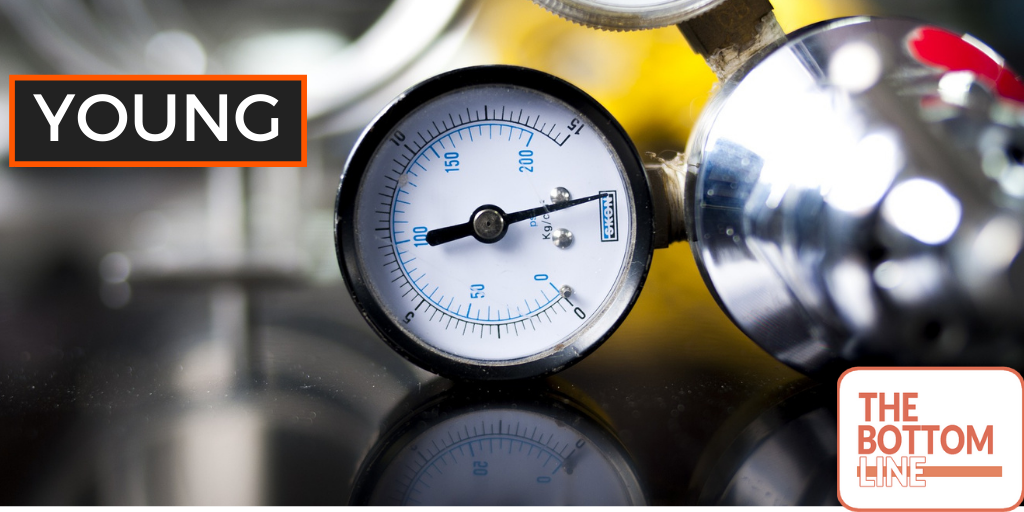Young

Conservative oxygen therapy for mechanically ventilated adults with suspected hypoxic ischaemic encephalopathy
Young P. 2020; 46(12):2411-2422.
Clinical Question
- In mechanically ventilated adults patients with suspected hypoxic ischaemic encephalopathy does conservative oxygen therapy when compared with usual oxygen therapy decrease the risk of dying or surviving with an unfavourable neurological outcome at 180 days?
Background
- Oxygen is often used liberally in post cardiac arrest patients
- Harmful effects of hyperoxaemia have been demonstrated in animal models following cardiac arrests
- Hyperoxia in humans is known to cause harm by mechanical mechanisms eg absorption atelectasis and coronary vasoconstriction and by biochemical mechanisms such as the production of free radicals
- A risk of using oxygen conservatively is exposing the patient to hypoxia, which is strongly associated with adverse outcomes after a cardiac arrest
- There is limited data on the effects of different oxygen therapy on survival and neurological outcomes in post cardiac arrest patients
- The ICU-ROX study found no difference between the number of ventilator free days when comparing conservative oxygen therapy with usual oxygen therapy for mechanically ventilated adult patients. However in the suspected hypoxic ischaemic encephalopathy (HIE) subgroup it showed possible benefit from conservative oxygen therapy (decreased 180 day mortality and increased number of ventilator free days). However this could have been accounted for by chance baseline imbalances or other confounding factors that may affect outcomes in patients who have suffered a cardiac arrest
- This study aims to address the potential benefit in receiving conservative oxygen therapy that the ICU-ROX study has identified
- By identifying if a conservative approach to oxygen therapy can improve survival or neurological outcome this would have a huge impact on patient care
Design
- This study is a post hoc analysis of data from ICU-ROX study
- The ICU-ROX study was a single blinded randomised multi centre trial
- The suspected Hypoxic Ischaemic Encephalopathy (HIE) subgroup identified pre randomisation
- To qualify for the suspected HIE subgroup: Either HIE diagnosis documented in notes, or all post cardiac arrest patients unless there was documentation that the patient was following commands after ROSC was achieved, after the cardiac arrest and prior to being sedated
- Data collected in addition to the ICU-ROX study:
- Details of cardiac arrest (location, if witnessed, bystander response, cause, 1st rhythm, time until ROSC)
- Patient comorbidities
- Any neuroprognostic tests performed
- If TTM was used
- Drugs used in resus
- Intention to treat analysis (excluding patients that withdrew consent)
Setting
- 21 ICUs in Australia and New Zealand
- Data collected between September 2015 and May 2018
Population
- As per the ICU-ROX study
- Inclusion: Mechanically ventilated adults (>17 years old), expected to remain ventilated for at least one day after starting the trial; within 2 hours of mechanical ventilation or non-invasive ventilation in an ICU
- Exclusion: Hyperoxia either indicated or avoidance of hyperoxia indicated, pregnancy, long term ventilated patients, death inevitable
- 1000 patients enrolled in ICU-ROX study
- 166 patients in suspected HIE subgroup
- 79 patients randomised to control group of which 7 lost to follow up, therefore 72 patients included in study
- 87 patients randomised to conservative oxygen therapy group of which 9 lost to follow up therefore 78 patients included in study
- Comparing baseline characteristics of intervention vs. control group
- Majority of baseline demographics well balanced
- Significant difference in response time following cardiac arrest between the groups. However, no significant difference in the time to receive defibrillation or time to sustained ROSC
- Conservative vs usual oxygen therapy
- Mean age: 62 vs 61, p=0.49
- Male: 76% vs 79%, p=0.69
- Comorbidities
- Hypertension: 38% vs. 30%, p=0.31
- Diabetes: 28% vs 23%, p=0.48
- Ischaemic heart disease: 21% vs 29%, p=0.21
- Asthma/COPD: 20% vs 19%, p=0.93
- Previous MI: 12% vs 20%, p=0.12
- Previous cardiac arrhythmia: 16% vs. 10%, p=0.26
- Cardiac arrest location
- Emergency Department: 3% vs 8%, p=0.24
- Home/residence: 38% vs 40%, p=0.73
- Other location (not in hospital): 49% vs 41%, p=0.25
- Witnessed arrest: 83% vs 77%, p=0.37
- Bystander response: 75% vs 71%, p=0.58
- First monitored rhythm VF/VT: 67% vs 58%, p=0.26
- Mean response time: 7.3 vs 5.0 mins, p=0.01
- Mean time to defibrillation: 9.7 vs 9.0min, p=0.56
- Mean time until sustained ROSC: 27 vs 25min, p=0.26
- Presence of STEMI: 27% vs 38%, p=0.14
- Post randomisation oxygen therapy:
- Proportion of hours patient’s oxygen saturations >96%: 0.39 vs 0.53, p=0.001
- Proportion of hours patients were receiving an Fi02 of 0.21: 0.37 vs 0, p<0.0001
Intervention
- Conservative oxygen therapy
- Aim for oxygen sats 91-96%
- High sats alarm (>96%) was treated as an emergency and oxygen titrated down by 5% every 10 minutes
Control
- Usual oxygen therapy
- Allow any oxygen sats >90%, no upper limit (not aiming for hyperoxaemia)
- No specific measures limited FiO2 or SpO2, upper alarm limits for SpO2 prohibited and FiO2 <0.3 was discouraged
Management common to both groups
- Monitored lower limit alarm for SpO2 was set at 90%, but could change if clinically indicated
- If ABG demonstrated PaO2 <60mmHg or unacceptably low SaO2 the FiO2 could be increased, regardless of the SpO2
- Patient’s received prescribed oxygen therapy until discharge from ICU or 28 days post randomisation, whichever came first
- All other ICU management of both groups left at discretion of clinicians
Outcome
- Primary outcome: Death or survival with an unfavourable neurological outcome at 180 days – no significant difference
- Unfavourable neurological outcome = Extended Glasgow Outcome Scale (GOS-E) category 1-4
- 55.5% of the conservative oxygen therapy group died or had an unfavourable neurological outcome at day 180 vs 68.1% of the usual oxygen therapy group
- OR 0.58, CI 0.3-1.12, p=0.14
- Secondary outcomes:
- Day 180 mortality
- Unadjusted mortality – significantly reduced in intervention group
- 43% vs 59%, OR 0.53 (95% CI 0.28-0.98), p=0.04
- Adjusted mortality – no significant difference
- Adjusted OR 0.56 (95% CI 0.25-1.23), p=0.15
- Unadjusted mortality – significantly reduced in intervention group
- No significant difference in ICU and hospital mortality
- No significant difference in cause specific mortality, for both groups most common cause of death was brain damage
- No significant difference in ICU or hospital length of stay
- Significantly more ventilator free days in conservative oxygen therapy group
- Median 23 days vs 0 days in usual oxygen therapy group
- Significantly more vasopressor free days in conservative oxygen therapy group
- Median 21 days vs 0 days in usual oxygen therapy group
- No difference in duration of ventilation among patients who survived over 28 days was demonstrated, suggesting that although the median number of ventilator free days was significantly higher in the conservative oxygen group, those who had less ventilator free days needed much longer time on a ventilator
- Day 180 mortality
- Post-hoc outcomes:
- Although not a specified secondary outcome the study reported that when neurological outcome was analysed across the whole GOS-E scale (rather than just a score of 1-4 considered as unfavourable), the median GOS-E score was significantly better with conservative oxygen therapy. However the 95% CI was wide
Authors’ Conclusions
- Conservative oxygen therapy was not associated with a statistically significant reduction in death or unfavourable neurological outcome at day 180 compared with usual oxygen therapy
- Statistically significant increases in number of ventilator and vasopressor free days in patients in conservative oxygen therapy group. However it is important to recognise that ventilator/vasopressor free days are also a reflection of mortality and the fact that the date is not normally distributed. All deaths had zero ventilator/vasopressor free days and therefore if the mortality if over 50%, the median number of ventilator/vasopressor free days must be 0. If mortality is less than 50%, the median number of free days can be much higher. Therefore the magnitude of difference demonstrated (21.1 vs 0) is less dramatic than it initially appears
Strengths
- Baseline demographics were well balanced
- This study includes the largest sample of patients in which oxygen therapy has been evaluated in HIE in a randomised clinical trial
- The data can be used to help deign future trials in order to do power calculations for sample size
Weaknesses
- This is a post hoc analysis so can only be used for hypothesis generating
- Numbers in both groups were small (78 & 72 patients) so was always going to be difficult to prove significant differences. 10% of patients lost to follow up and primary outcome status not available
- Many variables that can influence outcome after cardiac arrest were not measured, eg number of shocks, airway control used, whether mechanical compression devices were used
- There was low use of neuroprognostic tests
- No information was collected to demonstrate oxygen delivery eg lactate, central venous oxygen sats
The Bottom Line
- Although this study doesn’t manage to answer the key question of what is the optimum oxygen therapy for post cardiac arrest patients, it builds on the ICU-ROX study and sets the ground work for future work. There are exciting studies lined up for the future:
- The NIHR HTA funded study to further evaluate conservative oxygen therapy in mechanically ventilated adults in the UK aims to recruit 16,500 patients, starting from 2021
- MegaROX is an ANZICS CTG endorsed study which will enrol 40,000 participants across multiple countries, further comparing conservative vs liberal oxygen targets. It will be a series of multicentre, randomised, parallel-group, registry-embedded clinical trials. Within this will be the nested 6800 patient MegaROX HIE study focusing on patients with hypoxic iscahemic encephalopathy
External Links
- [article] Conservative oxygen therapy for mechanically ventilated adults with suspected hypoxic ischaemic encephalopathy
- [further listening] MEGAROX trial
Metadata
Summary author: Sarah Nelson
Summary date: date 11th March 2021
Peer-review editor: David Slessor
Image by: fernando zhiminaicela from Pixabay




Nice review.
Thanks.